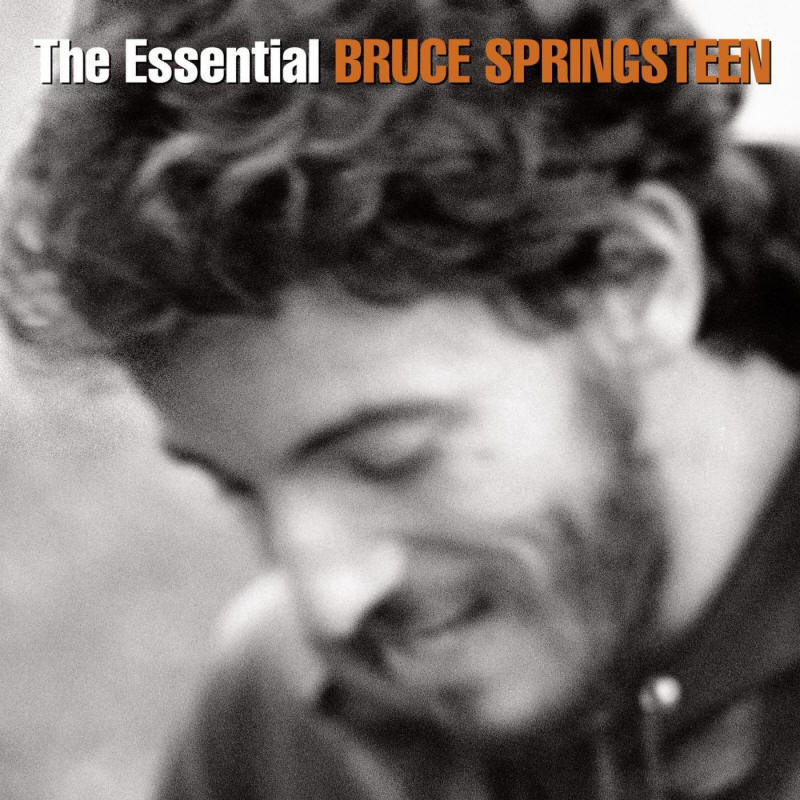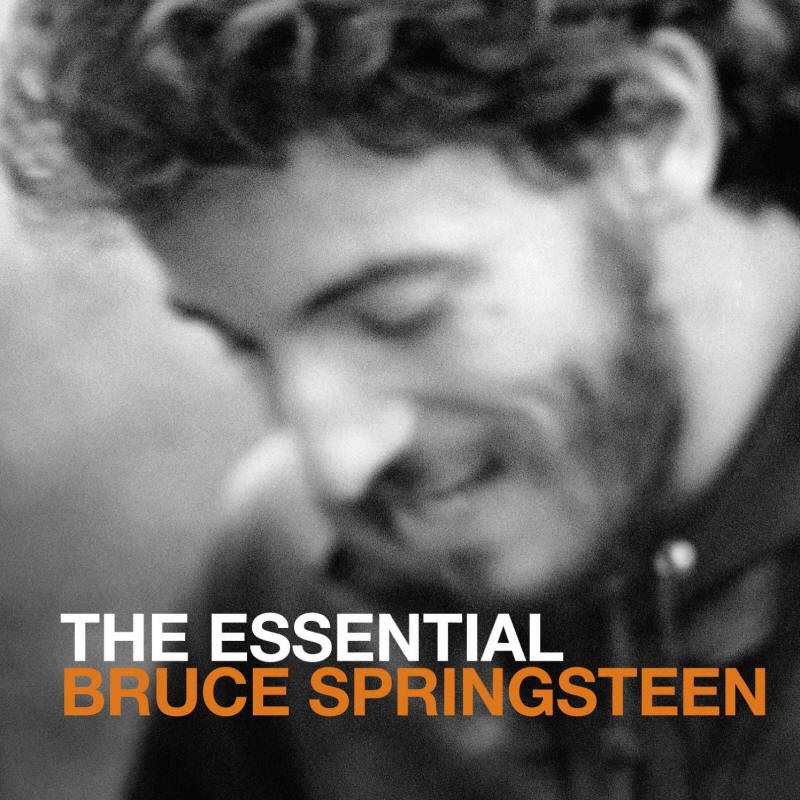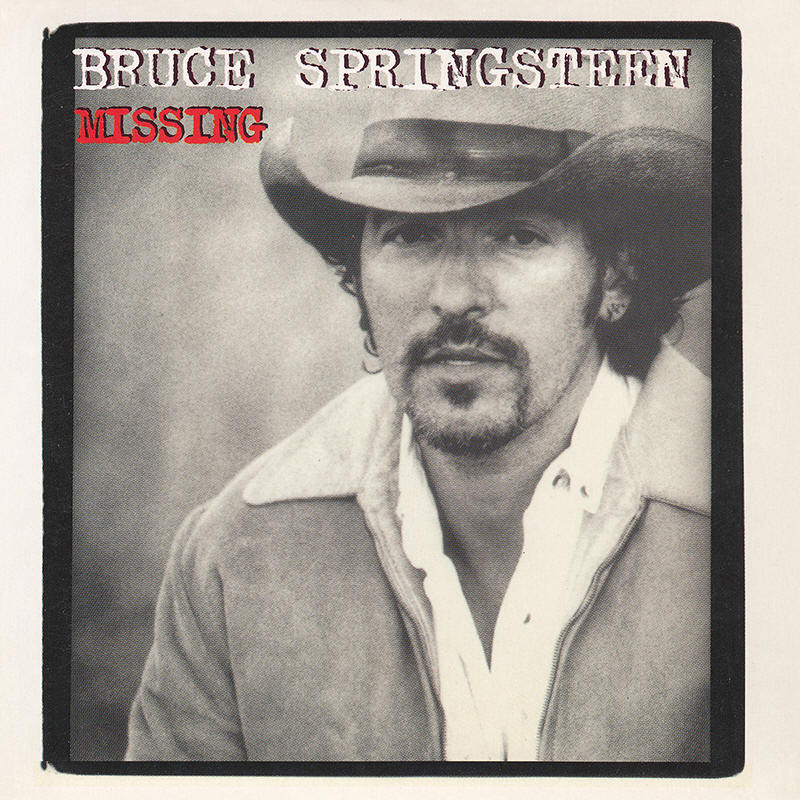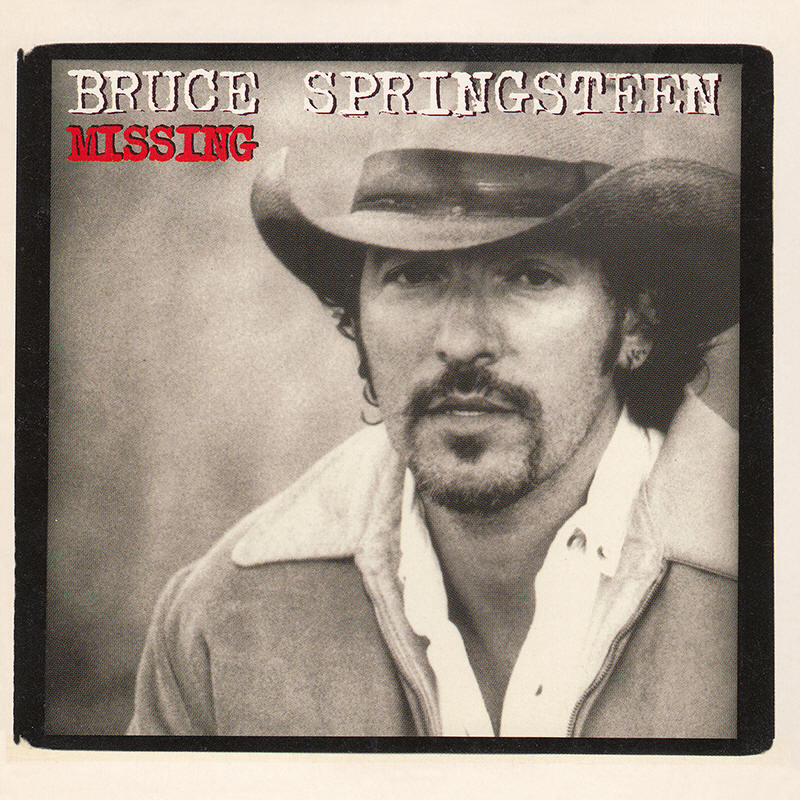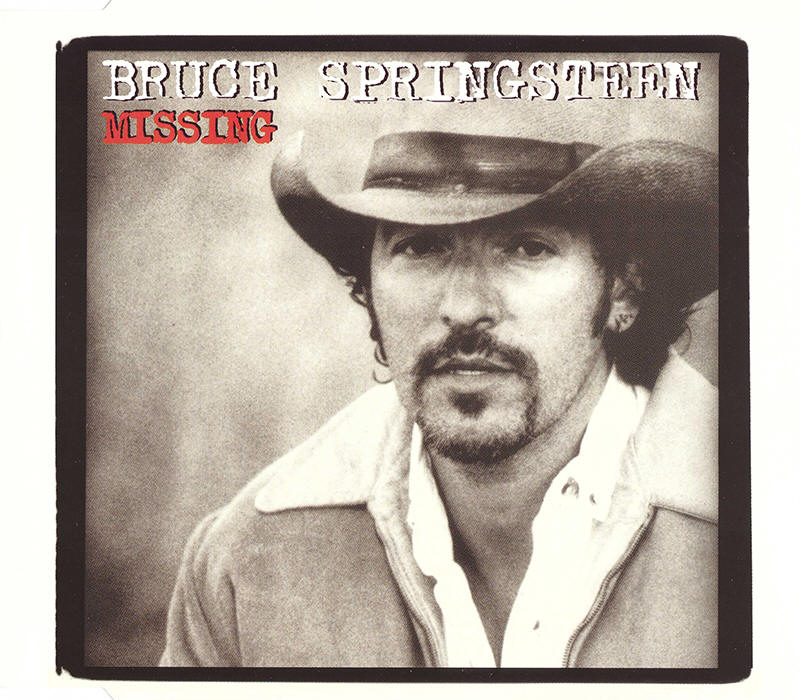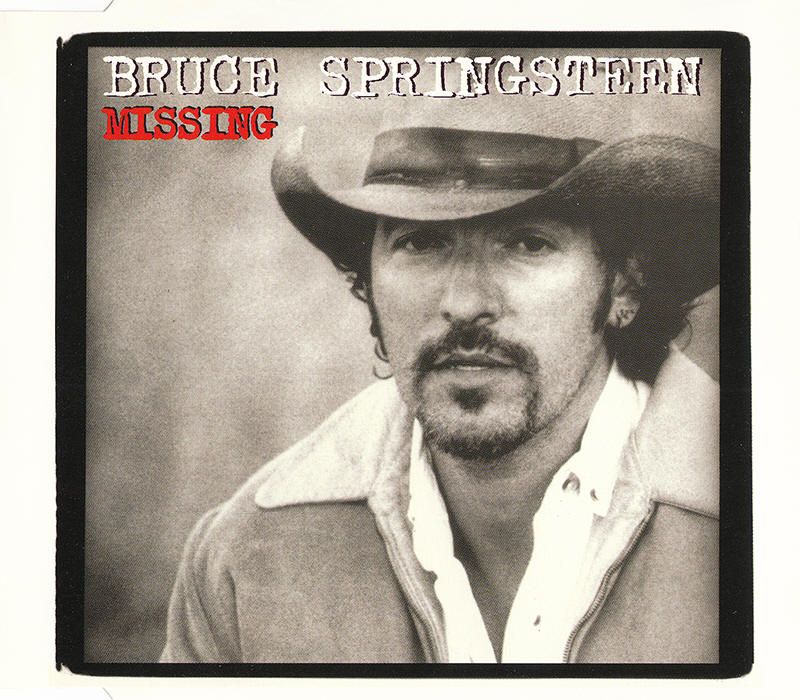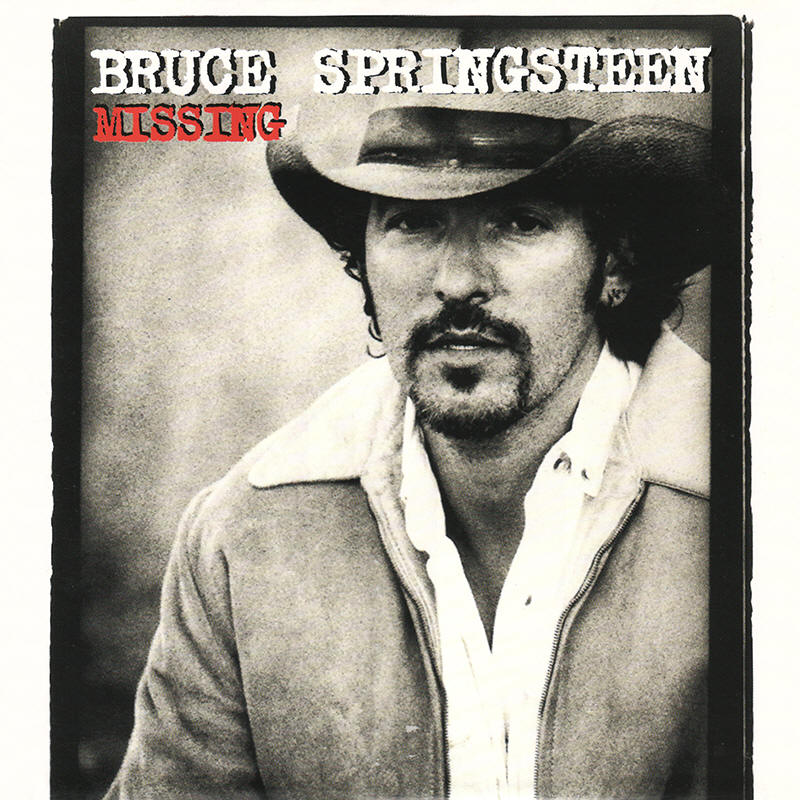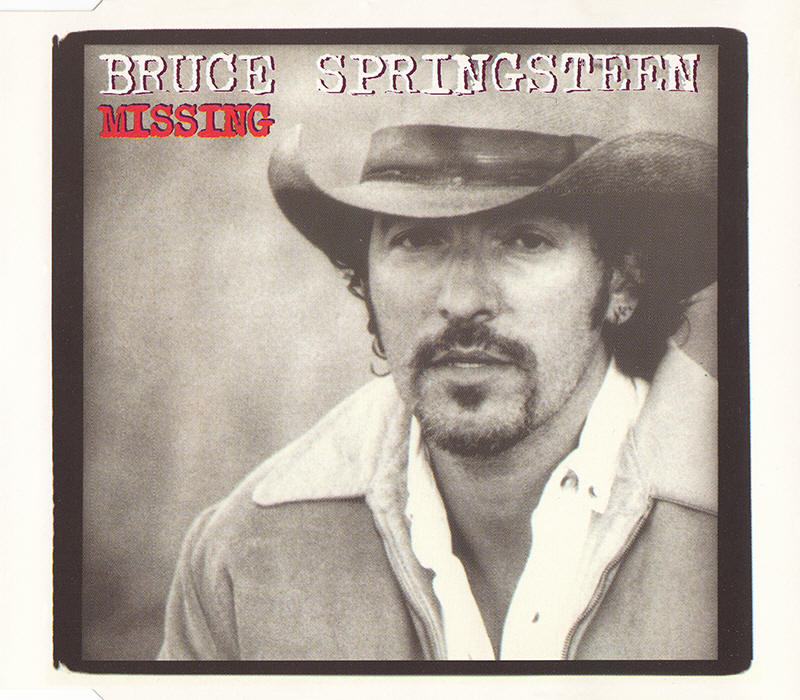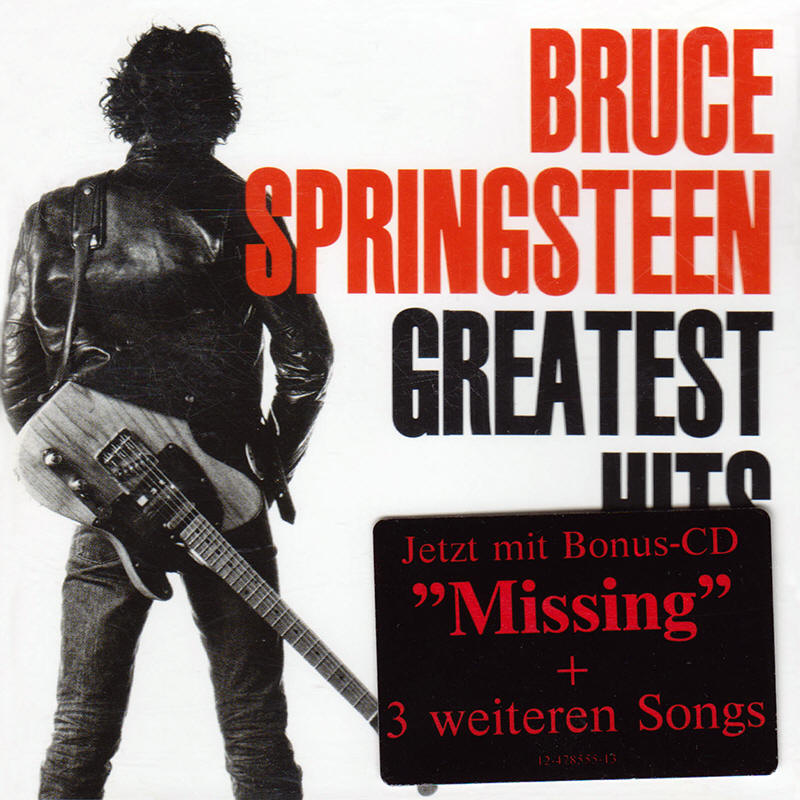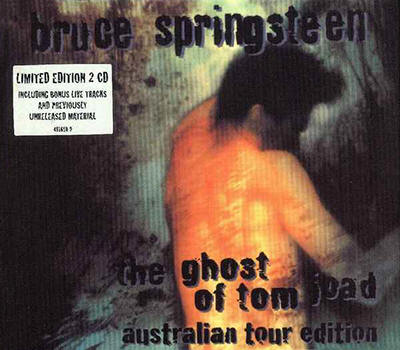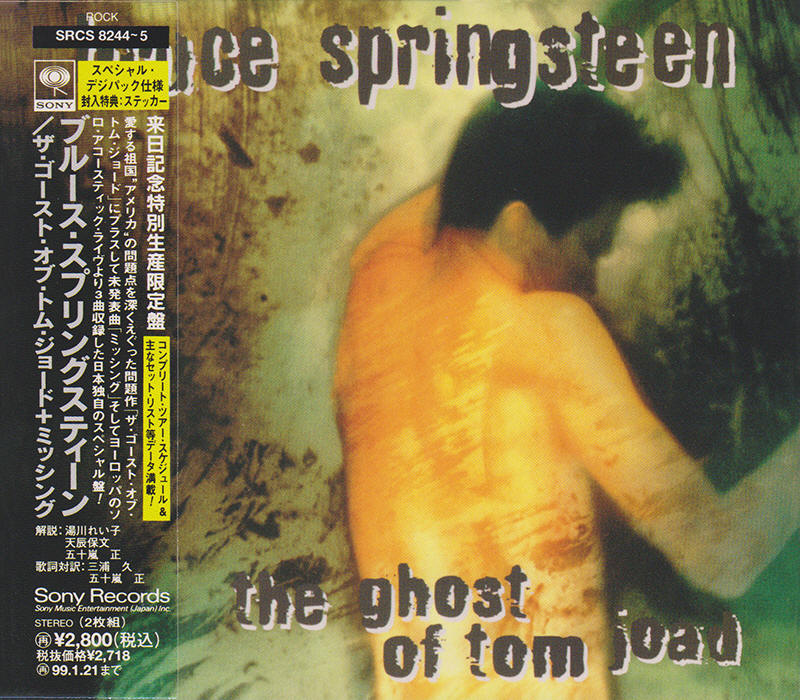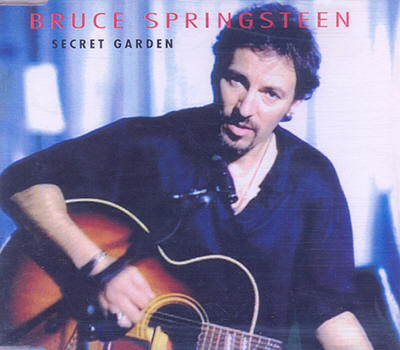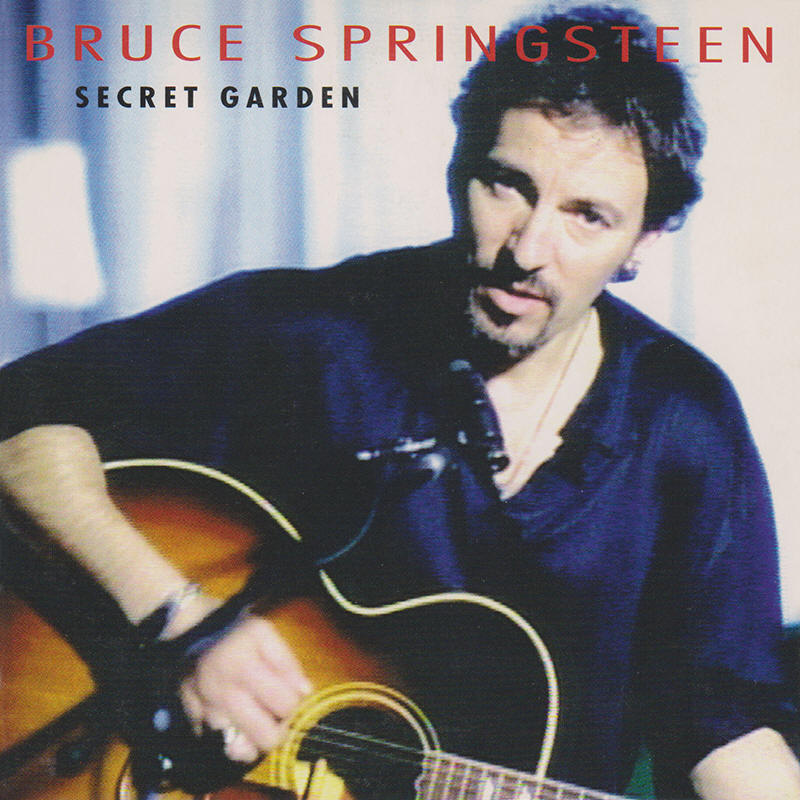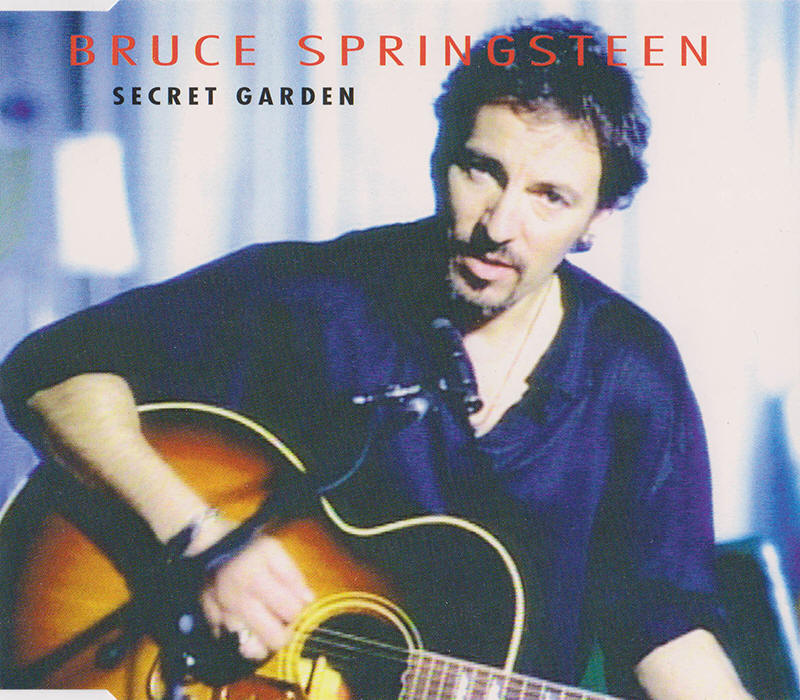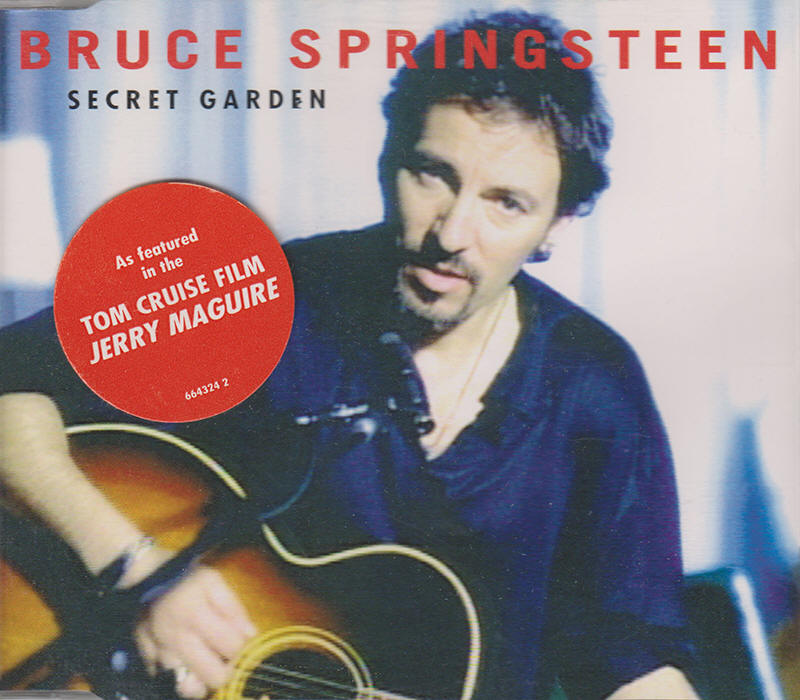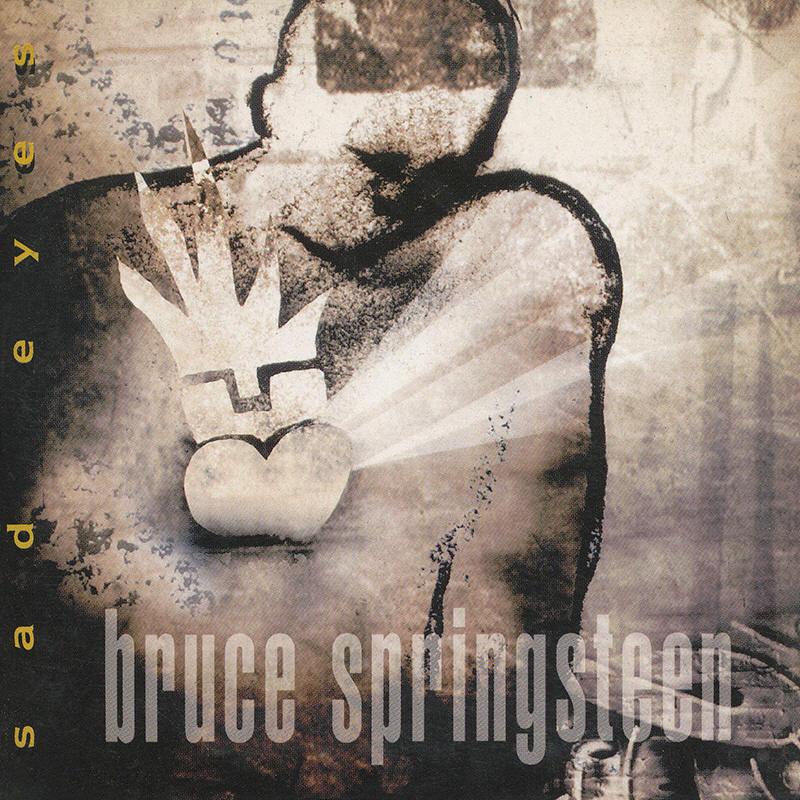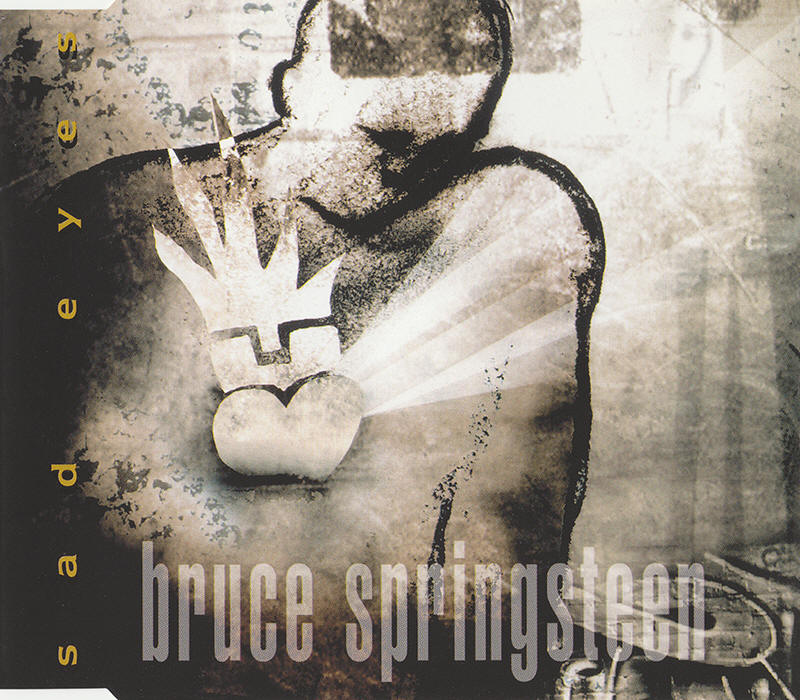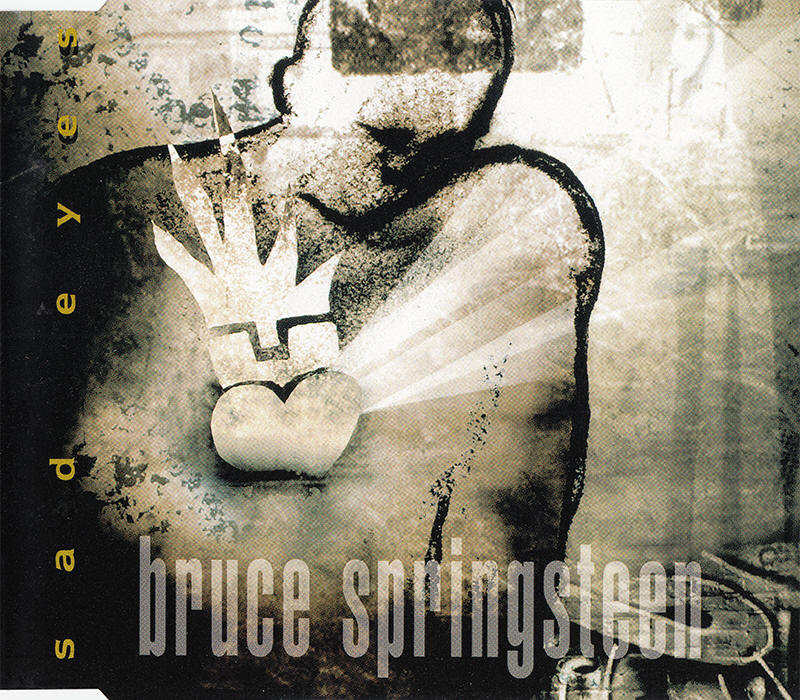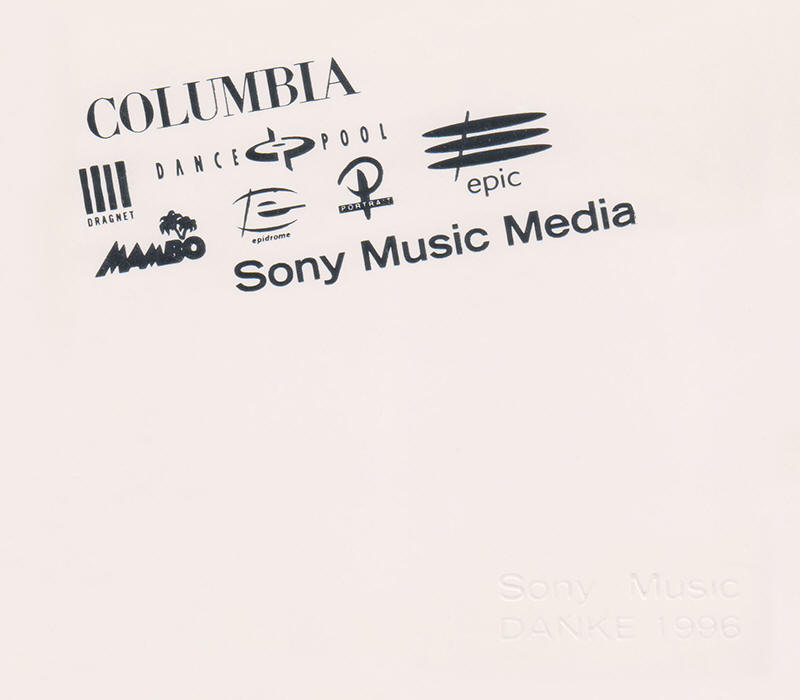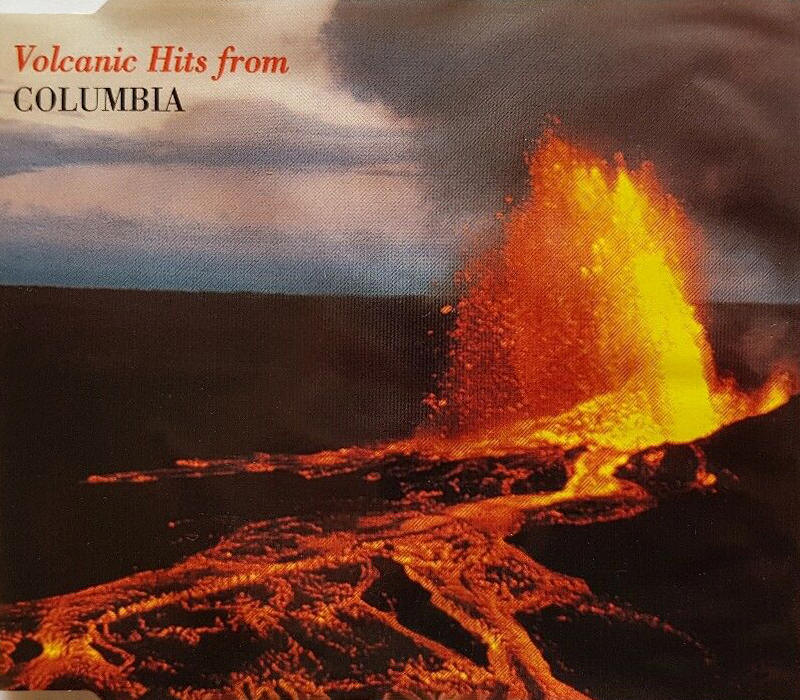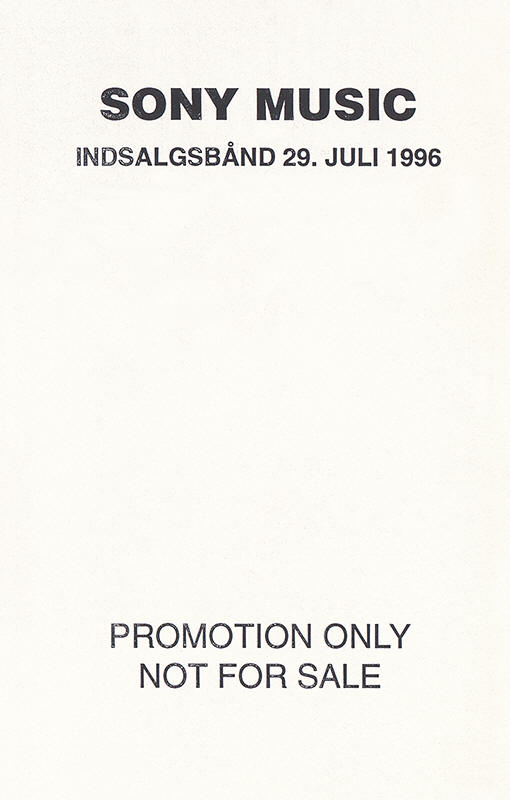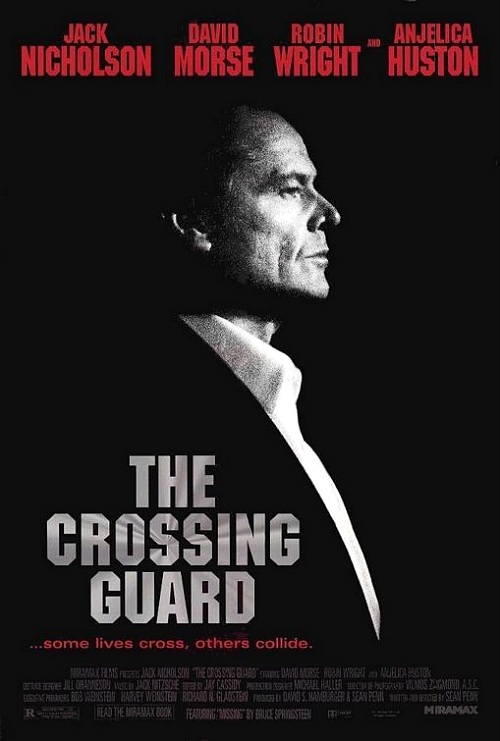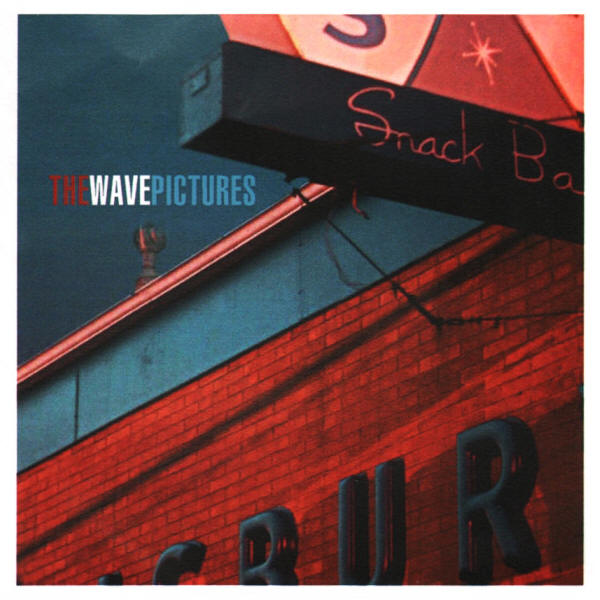MISSING 
Official studio version
Woke up this morning, was a chill in the air
Went into the kitchen, my cigarettes were lying there
Jacket hung on the chair, the way I left it last night
Everything was in place, everything seemed alright
But you were missing, missing, missing
Last night I dreamed the sky went black
You were drifting down, couldn't get back
Lost in trouble, so far from home
I reached for you, my arms were like stone
Woke and you were missing, missing, missing
Woah
Searched for something to explain
In the whispering rain and the trembling leaves
Tell me baby, where did you go
You were here just a moment ago
There's nights I still hear your footsteps fall
I can hear your voice moving down the hall
Drifting through the bedroom
I lie awake but I don't move
Missing, missing, missing, missing
Whoa
Missing
Info
MISSING is a song written by Bruce Springsteen and used in the soundtrack of Sean Penn's 1995 film The Crossing Guard. It was released as a single in 1996. The above lyrics are for Bruce Springsteen's official studio version of MISSING as released in 1996.
The official studio version of MISSING was included on The Essential Bruce Springsteen (2003 3-disc edition) compilation album.
Writing and Recording
Though not confirmed, it's likely that Bruce Springsteen wrote MISSING in early 1994. He recorded the song in April 1994 at Thrill Hill West, his home studio in Los Angeles, CA. This was a rented house that Springsteen relocated to following the 17 Jan 1994 Northridge earthquake. The song was produced by Bruce Springsteen and recorded by Toby Scott. Springsteen handles all vocals and instruments on the track. These 1994 sessions were for an album that was ultimately shelved. However, some other songs from these sessions were eventually released in 2025 as Streets Of Philadelphia Sessions, one of the seven "lost albums" included on the Tracks II: The Lost Albums box set. Having been released in 2003 on The Essential Bruce Springsteen (2003 3-disc edition) compilation album, MISSING was not included on Streets Of Philadelphia Sessions in 2025.
Track credits:
Bruce Springsteen: vocals, guitar, percussion, keyboards, drums, bass, recorder, loops
Bruce Springsteen: producer
Toby Scott: recording engineer
Bob Clearmountain: mixing engineer
Bob Ludwig: mastering engineer
The Essential Bruce Springsteen
The Essential Bruce Springsteen is a compilation album released as part of Sony BMG'S (previously Sony Music Entertainment) series of "Essential" sets. According to Springsteen's liner notes comments, the collection was intended as an introduction to his music for new fans who attended shows on The Rising Tour.
The collection is fundamentally a 2-disc set (clocking at 153:37) compiling songs from all of Springsteen's studio albums to date plus his Live In New York City release. A 3-disc limited edition (clocking at 201:04) was also released. It includes a bonus third disc comprising of a selection of rarities and previously unreleased recordings.
The Essential Bruce Springsteen was released on 11 Nov 2003 on Columbia Records. It debuted and peaked at #14 on the U.S. Billboard 200 album chart where it spent 13 weeks. It also reached #28 on the UK Albums Chart. The album was awarded certified gold and platinum records by the RIAA on 16 Dec 2003.
Bruce Springsteen -- The Essential Bruce Springsteen (2003 edition)
The Essential Bruce Springsteen was reissued on 16 Oct 2015, this time as a 2-disc set (clocking at 156:25) with an updated track list, compiling songs from all of Springsteen's studio albums to date plus his Greatest Hits (1995 edition) collection. This 2015 reissue features remastered tracks not found in that form on other Springsteen releases.
Bruce Springsteen -- The Essential Bruce Springsteen (2015 edition)
Bruce Springsteen's liner notes in The Essential Bruce Springsteen album booklet:
I was experimenting with drum looping at my home studio and recorded this in California in the mid '90s. I played it for Sean Penn and he used it in his film "The Crossing Guard."
Single Releases
The official studio version of MISSING was released as a single in Europe and South Africa. In 1997 it was included on some issues of the Secret Garden EP which was released to promote the Jerry Maguire movie soundtrack. In 1998 it was included on some issues of the Sad Eyes EP.
The 4-track Missing EP was also included as a bonus disc with a limited 2-disc European edition of Greatest Hits in 1996, a limited 2-disc Australian edition of The Ghost Of Tom Joad in 1997, and a limited 2-disc Japanese edition of The Ghost Of Tom Joad in 1997.
Bruce Springsteen -- Missing
CD - Columbia (SAMPCD 3558) - Austria, 1996
Promotional release, pressed in Austria for distribution in France.
01-
MISSING
Bruce Springsteen -- Missing
CD - Columbia (663508 1) - Austria, 1996
Pressed in Austria for distribution in Europe.
01-
MISSING
02-
DARKNESS ON THE EDGE OF TOWN [Live 19 Apr 1996 version]
Bruce Springsteen -- Greatest Hits
2xCD - Columbia (478555 6) - Austria, 1996
Special limited 2-disc edition pressed in Austria for distribution in Europe. It includes the
Missing EP as a bonus disc.
Disc 1: [
Greatest Hits album]
Disc 2, 01-
MISSING
Disc 2, 02-
DARKNESS ON THE EDGE OF TOWN [Live 19 Apr 1996 version]
Disc 2, 03-
BORN IN THE U.S.A. [Live 19 Apr 1996 version]
Disc 2, 04-
SPARE PARTS [Live 19 Apr 1996 version]
Bruce Springsteen -- The Ghost Of Tom Joad
2xCD - Columbia (481650 9) - Australia, 1997
Special limited 2-disc edition issued to coincide with the Australian leg of
The Ghost Of Joad Solo Acoustic Tour. It includes the
Missing EP as a bonus disc.
Disc 1: [
The Ghost Of Tom Joad album]
Disc 2, 01-
MISSING
Disc 2, 02-
DARKNESS ON THE EDGE OF TOWN [Live 19 Apr 1996 version]
Disc 2, 03-
BORN IN THE U.S.A. [Live 19 Apr 1996 version]
Disc 2, 04-
SPARE PARTS [Live 19 Apr 1996 version]
Bruce Springsteen -- The Ghost Of Tom Joad
2xCD - Sony (SRCS 8244-5) - Japan, 1997
Special limited 2-disc edition issued to coincide with the Japanese leg of
The Ghost Of Joad Solo Acoustic Tour. It includes the
Missing EP as a bonus disc.
Disc 1: [
The Ghost Of Tom Joad album]
Disc 2, 01-
MISSING
Disc 2, 02-
DARKNESS ON THE EDGE OF TOWN [Live 19 Apr 1996 version]
Disc 2, 03-
BORN IN THE U.S.A. [Live 19 Apr 1996 version]
Disc 2, 04-
SPARE PARTS [Live 19 Apr 1996 version]
Bruce Springsteen -- Secret Garden
CD EP - Columbia (664236 1) - Austria, 1997
Pressed in Austria for distribution in Europe.
01- SECRET GARDEN
02-
MISSING
Bruce Springsteen -- Secret Garden
CD EP - Columbia (664236 2) - Austria, 1997
Pressed in Austria for distribution in Europe.
01- SECRET GARDEN
02-
MISSING
03-
HIGH HOPES
04-
THE GHOST OF TOM JOAD
Bruce Springsteen -- Secret Garden
CD EP - Columbia (664324 2) - Austria, 1997
Pressed in Austria for distribution in the UK.
01- SECRET GARDEN
02-
MISSING
03-
HIGH HOPES
04-
THE GHOST OF TOM JOAD
Bruce Springsteen -- Sad Eyes
CD single - Columbia (666884 1) - Austria, 1999
Made in Austria for the European market.
01-
SAD EYES
02-
MISSING
Other Official Releases
The official studio version of MISSING appears on some promotional various artists albums.
Various artists -- Danke 1996
2xCD - Sony Music (SAMPCDP 1996) - Germany, 1996
Promotional sampler.
Various artists -- Volcanic Hits From Columbia
CD - Columbia (SAMP861) - Australia, 1996
Promotional sampler.
Various artists -- Indsalgsbånd 29. Juli 1996
MC - Sony Music (no catalog number) - Denmark, 1996
Promotional sampler.
Live History
As far as it's known, Bruce Springsteen has never performed MISSING live.
Appearance in Movies
Bruce Springsteen's official studio version of MISSING appears in one movie.
The Crossing Guard
It was used in the 1995 film The Crossing Guard, directed by Sean Penn and starring Jack Nicholson, David Morse, Robin Wright, and Anjelica Huston. No soundtrack album was released for this film.
About half of MISSING plays over the opening credits and the complete song plays again over the closing credits.
Sean Penn is a lifelong Bruce Springsteen fan, and he also briefly dated Springsteen's younger sister Pamela. Springsteen played MISSING for Penn in late 1994 and Penn asked him if he could use it in a film he was directing. The song was used in Penn's The Crossing Guard, which was released in November 1995.
Covers
At least on artist has recorded and released Bruce Springsteen's MISSING.
The Wave Pictures -- Play Some Pool
CD-R - Where It's At Is Where You Are (no catalog number) - UK, 2009
This is a Bruce Springsteen tribute album. It's a free disc included with the label's "Girls In Their Summer Clothes / If I Should Fall Behind" 7-inch single. The song is incorrectly titled "You're Missing" on this release.
Request
Please contact me if you have scans for or info about any official release containing Bruce Springsteen's official studio version of MISSING that's not mentioned on this page. If you have any additions, comments, or corrections to this page, please contact me via the below form or by email at .
Available Versions
List of available versions of MISSING on this website:
MISSING [Official studio version]
Page last updated: 18 Jun 2025

